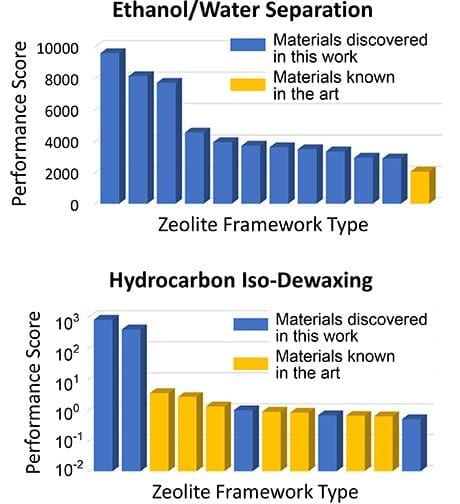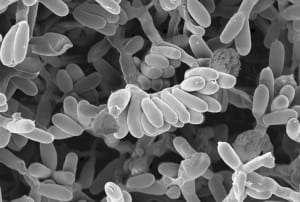
Tianhe-2, or Milky Way-2, a supercomputer developed by China’s National University of Defense Technology, is the new No. 1 ranked machine on the industry-standard Top500 list of the world’s most powerful high performance computing (HPC) systems.
Clocked at 33.33 petaflops (quadrillion floating operations per second) on the Linpack benchmark, the Tianhe-2 dropped Oak Ridge National Laboratory‘s Titan to No. 2 on the list. The new Top500 list was announced Monday at the International Supercomputing Conference (ISC) in Leipzig, Germany.
See the complete Top500 list.
LLNL’s Sequoia, an IBM Blue Gene/Q system, dropped to No. 3 and Vulcan made its first appearance on the Top500 list at No. 8. DOE and NNSA have four supercomputers in the first 10 of the Top500.
“We congratulate China’s National University of Defense Technology for their remarkable achievement,” said Dona Crawford, associate director for Computation. “The latest edition of the Top500 list underscores the global nature of high performance computing. Recognition of the value of HPC to the scientific discovery and technological innovation that boost economic competitiveness has resulted in fierce global competition to develop next-generation systems.”
Crawford recently testified at a Congressional hearing about the critical need to develop next-generation supercomputers. She joined Daniel Reed, University of Iowa’s vice president for research and economic development; Roscoe Giles, chairman, Advanced Scientific Computing Advisory Committee; and Rick Stevens, associate laboratory director for computing, environment and life sciences at Argonne National Laboratory. The group addressed the House Subcommittee on Energy, which is part of the House Committee on Science, Space and Technology.
The testimony about next-generation supercomputers is available online.
This is the second Chinese system to be ranked as the world’s most powerful supercomputer. China broke into the top echelon of HPC in November 2010, when the Tianhe-1 took the top ranking. The Tianhe-2 surprised HPC pundits by appearing two years ahead of its expected deployment, according to the Top500. Tianhe-2 has 16,000 nodes, each with two Intel Xeon IvyBridge processors and three Xeon Phi processors for a combined total of 3,120,000 computing cores.
The Latest Bing News on:
Supercomputing
- You'll Want to Steal These Unique Celeb Baby Names For Yourselfon April 27, 2024 at 6:00 pm
From Apple Martin to Stormi Webster, Hollywood's most unique baby names will have you rethinking how you pick out a moniker.
- Microsoft earnings were solid — and here’s why they’re primed to get even betteron April 26, 2024 at 2:28 pm
Azure hasn’t had quite enough capacity to meet booming AI demand, and Copilot software tools should contribute more later this year.
- Researchers outline roadmap for digital brain scienceon April 25, 2024 at 10:34 am
Neuroscience has entered a new, digital phase. The combination of brain research with supercomputing in large-scale, multi-disciplinary research collaborations has enabled an innovative approach to ...
- Mosquito-Borne Diseases To See 'Increasingly Frequent Outbreaks' Worldwideon April 25, 2024 at 2:15 am
"We must anticipate outbreaks and move to intervene early to prevent diseases from happening in the first place," researchers warn.
- Avant Debuts Supercomputing Network and Comprehensive Licensable Dataset for AI Accelerationon April 24, 2024 at 8:00 am
Avant Technologies, Inc., an artificial intelligence technology (AI) company specializing in the development of advanced AI and data center infrastructure solutions, is announcing the release of a ...
- A roadmap for digital neuroscience: Researchers summarize current status and further developmentson April 23, 2024 at 1:59 pm
Neuroscience has entered a new, digital phase. The combination of brain research with supercomputing in large-scale, multi-disciplinary research collaborations has enabled an innovative approach to ...
- Microsoft CTO calls supercomputing speculation "amusingly wrong"on April 23, 2024 at 9:10 am
Microsoft's chief technology officer, Kevin Scott, called supercomputing speculation "amusingly wrong" in a post welcoming Jason Taylor to the company from Meta. The comments come a month after ...
- Avant Technologies Launches Advanced AI Supercomputing Network and Expansive Data Solutionson April 23, 2024 at 7:52 am
Avant’s Chief Information Officer, Danny Rittman, said of the launch, “Avant’s supercomputing network and our expansive licensable dataset will facilitate significant advancements in AIdriven ...
- Microsoft hires former Meta exec to bolster AI supercomputing teamon April 22, 2024 at 4:11 pm
Former Meta executive Jason Taylor is joining Microsoft’s AI supercomputing team. In a LinkedIn post on Monday, Microsoft CTO Kevin Scott says Taylor will take on the role of corporate vice president ...
- io.net and Aethir Join Forces to Revolutionize How the World Accesses Supercomputing Poweron April 22, 2024 at 10:51 am
Chainwire In a move set to transform the computing landscape, io.net and Aethir today announced a groundbreaking partnership to make supercomputing accessible to all. By combining their decentralized ...
The Latest Google Headlines on:
Supercomputing
[google_news title=”” keyword=”supercomputing” num_posts=”10″ blurb_length=”0″ show_thumb=”left”]
The Latest Bing News on:
Supercomputer
- Supercomputer makes a close call as it predicts the final Premier League standingon April 27, 2024 at 3:20 pm
Arsenal remains at the top of the Premier League standings, with Manchester City yet to play its outstanding game. The Gunners are benefiting from Liverpool’s poor run of form, leaving only City as ...
- Women’s Super League: ‘We Can’t Control The Opta Supercomputer’ – Arsenal Boss Eidevallon April 27, 2024 at 11:53 am
Arsenal sit in third place ahead of Sunday’s match against Everton and are six points behind leaders Manchester City ...
- NVIDIA’s AI Supercomputer Arrives at OpenAI, Elon Musk Shares Thoughtson April 27, 2024 at 11:38 am
NVIDIA delivers its first AI supercomputer, the DGX A100, to OpenAI, marking a significant milestone in AI research. Read more!
- Nvidia to help Japan build hybrid quantum-supercomputeron April 26, 2024 at 9:31 pm
TOKYO -- Japan's government-backed technology institute will work with Nvidia to build a hybrid supercomputer that offers quantum computing capability for use by researchers and companies.
- HPE to build new 35 petaflop supercomputer in Polandon April 26, 2024 at 10:09 am
In addition to the new Helios machine, CYFRONET also houses the 7.7 petaflops system, Athena, launched in 2022; the Huawei-based Ares, a 3.5 petaflops system launched in 2021; and HPE-based Prometheus ...
- Why IBM’s dazzling Watson supercomputer was a lousy tutoron April 26, 2024 at 2:00 am
With a new race underway to create the next teaching chatbot, IBM’s abandoned 5-year education push offers lessons about AI’s limits.
- Sandia Pushes The Neuromorphic AI Envelope With Hala Point “Supercomputer”on April 25, 2024 at 6:20 pm
Not many devices in the datacenter have been etched with the Intel 4 process, which is the chip maker’s spin on 7 nanometer extreme ultraviolet immersion ...
- NVIDIA is helping Japan build their bleeding-edge ABCI-Q quantum supercomputer with HPC and AIon April 24, 2024 at 8:36 pm
NVIDIA has announced that Japan's new quantum supercomputer will be powered by NVIDIA platforms for accelerated and quantum computing. Japan's National Institute of Advanced Industrial Science and ...
- Nvidia supercomputers: new collegiate, research systems come onlineon April 23, 2024 at 5:00 pm
Georgia Tech's dedicated AI supercomputer is a cluster of 20 Nvidia HGX H100s; the DOE's Venado is the first large-scale system with Nvidia Grace CPU superchips deployed in the U.S. One Nvidia ...
- Supercomputer simulation reveals new mechanism for membrane fusionon April 23, 2024 at 5:46 am
An intricate simulation performed by UT Southwestern Medical Center researchers using one of the world's most powerful supercomputers sheds new light on how proteins called SNAREs cause biological ...
The Latest Google Headlines on:
Supercomputer
[google_news title=”” keyword=”Supercomputer” num_posts=”10″ blurb_length=”0″ show_thumb=”left”]











